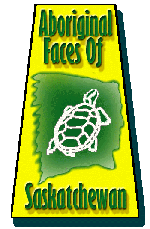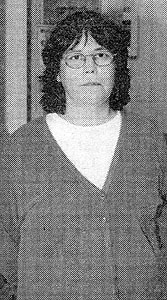|
 |
||||||||
Artist uses interesting methods to make her point By Paul Sinkewicz Reprinted
with permission from
Cuthand began her interest in art at the age of eight while her family was visiting artist Gerald Tailfeathers on the Blood reserve in Alberta. She said she was immediately taken with the jars, tubes of paint and brushes in the busy little studio. "Oh, I wanted to do it so bad," she remembered. "That's when I decided to become an artist." After high school she did start to take art classes for what she calls "One pitiful year," at the University of Regina in 1977. She then dropped out to have her second child. But she kept returning to art, going back to school at the University of Saskatchewan in 1980. Three years later she had her Bachelor of Fine Arts degree. Cuthand was a printmaker during her school years, but developed a severe allergy to one of the solvents used, and was forced to switch to painting. In 1990 she did a series of shirts and dresses, and later that year had her first solo show at the Mackenzie Art Gallery in Regina. At the same time she was also achieving her Master of Fine Arts degree at the University of Saskatchewan. "When I finished with the masters program I had finished with the dresses and didn't know what to do next," she said. One suggestion was that she take up drawing -- something Cuthand says she had no talent for. But since she was at a loss for an art form to delve into, she tried it, and ended up creating a series of drawings and text, titled Misuse is Abuse. The self-described sarcastic work referred to the experience of being given government school supplies by the local Indian agent every fall before school. All the supplies were printed with the words "misuse is abuse." Cuthand said she used the show to talk about the subtle, inherent racism between even white liberals and Indians. "People became interested in me because it was sarcastic and rude," she said. "People like rude Indians for some reason, so you get some sort of cachet by being bad." After that success, Cuthand hit what she describes as a two-year slump. She was the single mother of two teenage daughters who needed her attention. She could no longer let herself get lost in painting for days at at time and had to find a quicker art form. That's when she stumbled onto the instant gratification of Polaroids and clear plastic photocopies that would lead to her current exhibit. "About two-and-a-half years ago I started photographing people in my community using a party-favor headdress that says Brave Chief," she said. "the little headdress is so absurd people put it on and they have fun. There's famous and not-so-famous people in there, children, students, all kinds of people." She said the headdress was meant as a unifying factor among the photographs and is a jibe at photographer Edward Curtis, who chronicled Indian portraiture in the latter part of the late 1800s, using a trunk-full of props like headdresses and blankets. Cuthand said Curtis believed he was recording a vanishing race and wanted to capture Indians as they were pre-European contact. Links: (click on X in top right corner of outside link to return to photo gallery) |
|||||||||








